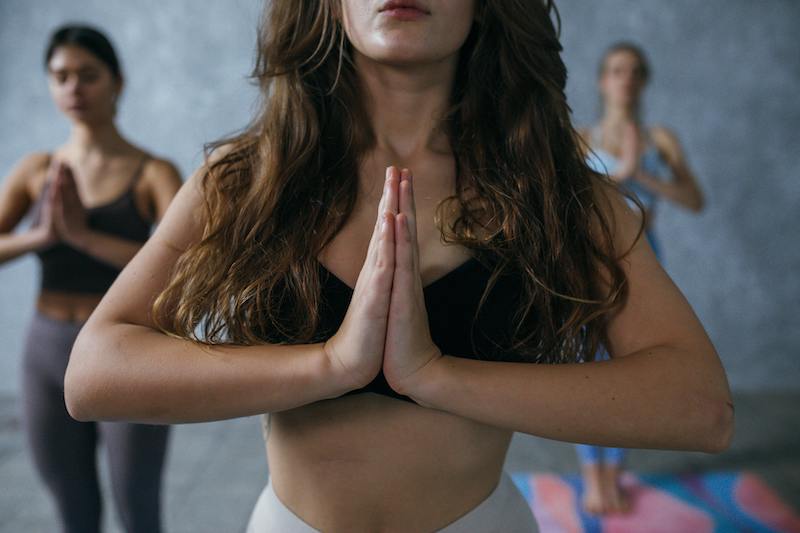I am sure you would not argue that sleep plays a crucial role in our lives. We spend one-third of our lives sleeping.
It is the foundation for our physical, emotional, and mental well-being.
And inability to fall asleep is one of the most frustrating things on earth.
Ugghh… We are all familiar with the feeling.
The quality of our sleep is also important. You can tell the difference between deep restful sleep and restless light sleep.
Now…
Given the profound effect sleep has on our well-being, finding EFFECTIVE ways to improve sleep quality is essential.
One such method is incorporating somatic exercises into your nightly routine.
Somatic exercises which focus on body awareness and relaxation, can be particularly beneficial for easing into sleep more smoothly.
They can calm your mind, release physical tension, and create a better environment for sleep.
In the following article, I’ll explain specific somatic exercises that can help you fall asleep faster and improve the quality of your rest.

The Butterfly Hug
One common reason for difficulty falling asleep is an overactive mind filled with thoughts and emotions. This can prevent your nervous system from transitioning from the Sympathetic (fight-or-flight) state to the Parasympathetic (rest-and-digest) state.
If you find yourself struggling with this at night, try the “The Butterfly Hug” grounding technique. This method can help quickly alleviate feelings of overwhelm and anxiety, promoting a smoother transition to relaxation.
THE BUTTERFLY HUG
- Find a Comfortable Spot: Sit up straight in a comfortable space.
- Start with Deep Breathing: If it feels right, close or lower your eyes and begin taking deep breaths.
- Notice Your Emotions: Allow yourself to be aware of any emotions or distress that arises while you breathe through them.
- Position Your Hands: Cross your arms and place your hands on your chest, with each middle finger just below the opposite collarbone. Spread your fingers out so they rest on your chest.
- Form the Butterfly Shape: Your thumbs should point towards your chin. Interlock your thumbs to create a shape resembling a butterfly’s body, with your hands representing its wings.
- Begin Tapping: Gently and rhythmically tap your hands on your chest, alternating left and right, for at least 8 rounds. Continue your deep breathing as you tap.
- Assess Your Distress Level: After the first set of 8 taps, pause to evaluate your level of distress. If you still feel distressed, try another set of 8 taps. Continue to assess and repeat until you feel more relaxed or less distressed.
Progressive muscle relaxation
Progressive Muscle Relaxation (PMR) is a powerful relaxation method used to manage stress and anxiety, ease insomnia, and alleviate certain types of chronic pain.
This technique involves systematically tensing one muscle group at a time, and then relaxing it to release the tension. The process helps induce deep relaxation and improve overall well-being.
PROGRESSIVE MUSCLE RELAXATION
- Contract a Muscle Group: While inhaling, tighten a specific muscle group (like your upper thighs) for 5 to 10 seconds.
- Release and Relax: Exhale and quickly release the tension in that muscle group. Allow yourself 10 to 20 seconds to relax and feel the difference.
- Move to the Next Muscle Group: Proceed to the next muscle group (such as your buttocks), and repeat the process.
- Focus on Relaxation: As you release the tension, pay attention to the sensation of relaxation in each muscle group. You might find it helpful to visualize stress leaving your body as you relax each area.
- Continue Up the Body: Gradually work your way through the muscle groups in your body, contracting and relaxing each one.
Here is an excellent video with a good somatic tension-relaxation sequence that you can perform every night in your bed before falling asleep.
Eye press breathing
As you settle into bed, it’s crucial to eliminate distractions, such as your phone, and signal to your body that it’s time to unwind and rest. To support this process, we recommend trying “Eye Press Breathing,” a calming breathing technique designed to soothe the nervous system.
How to do it: While lying down, gently press your wrists against your closed eyes and concentrate on taking slow, deep breaths through your nose.

Somatic Yoga
Somatic yoga focuses on gentle, mindful movements and body awareness. It can help to calm the mind and relax the body.
One key benefit of somatic yoga is its emphasis on deep, conscious breathing and slow, deliberate movements.
These practices help activate the parasympathetic nervous system, which is responsible for the “rest-and-digest” response.
As you move through somatic yoga poses, you teach your body to transition from a heightened state of alertness to a more relaxed state, making it easier to fall asleep.
Yoga Bolster Pillow
Upgrade you somatic practice with yoga bolster pillow. This special cushion is used for added support for the body during meditation, somatic stretching or just simple relaxation.
Additionally, somatic yoga promotes greater body awareness and mindfulness, which can address the racing thoughts and anxiety that frequently accompany insomnia.
Check out this Somatic Yoga routine – you get relaxed and ready to sleep just from watching Erica Webb performing these simple, yet so therapeutic exercises!
The Humming BeE Breath
Bhramari Breath, also known as the humming bee breath, is a powerful somatic technique that engages the vagus nerve and helps regulate the nervous system.
By focusing on humming with your mouth closed during the exhale, you activate the parasympathetic nervous system and reduce stress.
This method is especially effective for quickly returning to a calm and balanced state.
Additionally, it can be a helpful practice for easing into sleep, making it ideal for use in a private, quiet space where you can fully concentrate on extending your exhalations.
THE HUMMING BEE BREATH
- Begin by settling into a comfortable position.
- Fully exhale all the air from your lungs.
- Inhale deeply through your nose.
- As you exhale, gently press your cartilage and produce a steady, calming humming sound, similar to a bee.
- Continue this breathing pattern for 6 to 8 cycles.
- Lower your hands and take a moment to relax.





